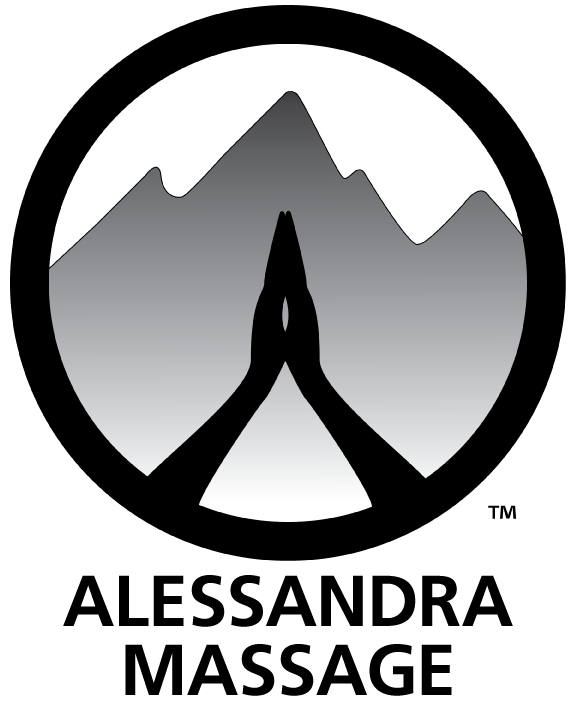Spend a few days skiing hard on the mountain, and you will agree; it’s is a total body workout, and can leave you feeling tight all over, and in need of an effective, relieving post-ski massage. Skiing requires efficient, coordinated, balanced movement, blending skeletal and muscular strength. The sport puts incredible stress on the joints; the tighter our muscles get from exertion, the more tension is put on tendons surrounding and attaching to joints, causing complaints of sore hips, lower back, knees, ankles, even shoulders.
Primary muscles recruited in skiing are categorized into 5 groups. Perhaps least obvious, the core and torso musculature, provide dynamic balance and structural support. The deep core muscles stabilize the lower back while skiers take on varied terrain. The quadratus lumborum, or QL, is a common culprit in lower back pain, as it deeply connects the top of the posterior pelvis to the lowest rib and lumbar vertebrae, stabilizing, flexing and shock-absorbing the impact of the bumps of skiing, yet never noticeably tiring, just tightening. The erector spinae group are torso muscles which run up the sides of the spine from the sacrum to the neck and skull, laterally flexing, or bending, the spine, as well as bilaterally extending the spine and torso; keeping us upright.
Secondly, consider the hard-working gluteal muscles, and their importance in skiing. Primary drivers of the hip joint, they are called to action with every turn we take. Often we feel the work more in the thigh and leg muscles, when in fact the gluts bear much of the work, laterally and medially rotating, flexing and extending, and adducting and abducting the hip joint/femur. The gluts are engaged with every lower body biomechanical motion in skiing, and resist the powerful forces put on the body gravitationally.
Third, the quadriceps and hip flexors, or frontal thigh muscles, act together to flex the femur toward the pelvis, ie. pull the knee upward, stabilizing us in a squatting position, such as that employed skiing. The vastus lateralis is the sole muscle of the outer thigh, and its fascia will often adhere to the iliotibial tract (IT band), a superficial sheet of strong fascia with vertical fibers that run up the lateral side of the thigh. This lateral edge of the thigh is a common target area for skiers’ massage, as it constantly stabilizes the hip and knee.
The fourth distinct group of skiing muscles is the hamstring group, which opposes the action of the quads, extending the hip and, most importantly in skiing, flexing, or bending, the knee. Composed of three muscles, smaller than the quadriceps group, they all originate from the ischial tuberosity, or sit-bone, and help absorb shock and protect the ACL.
The feet and ankle muscles are essential in dictating movements of skiing. In the chain of command, they actually come first. All lower-body actions in alpine skiing originate with the ankles and feet. Consider all of the subtle motions employed by the feet. Ankle inversion and eversion muscles transfer pressure to the inner and outer edges of the foot, maintaining lateral and medial alignment. These include the calf muscles, the peroneals on the lateral edge of the lower leg, and tibialis anterior, which runs directly parallel and lateral to the shin bone; all hot-spots for massaging the tired skier leg. These muscles also engage during dorsifelxion and plantarflexion, or pulling up and pushing down the ball of the foot in the ski boot, constant actions in skiing, as we maintain fore/aft balance and support ourselves on uneven terrain.
An additional group to acknowledge is the shoulders and arms. The biceps, triceps, deltoids and rotator cuff muscles all fire when using ski poles, and we especially feel their work at the beginning of the season!
High quality educated massage work, customized for the individual skier, alleviates the tight fatigued musculature from a hard day on the slopes. Soothing gliding and kneading techniques, combined with hot stones to relax tense muscles and promote circulation, and targeted manipulation of specific areas, including cross-fiber friction, trigger point work, vibration, jostling and passive table-Thai stretches, will generally loosen and renew your body for another day of fun on the mountain.


